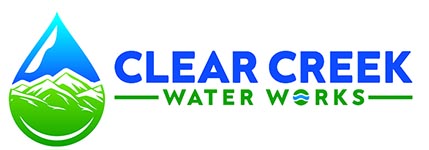Once upon a time, there was a method of well chlorination that consisted of pouring a gallon of bleach down a well shaft, then running the water into the house until the well flushed clean. There are even some Health Departments that still recommend this method. Well, guess what? Sometimes it works and sometimes it doesn’t. Being in a unique position for our area with access to information on total coliform results, we were able to evaluate the effectiveness of this method and we were not impressed. There were just too many coliform positives generated using this method, so we did some further research in developing our own process for chlorinating wells.
It is important to remember that NO method of chlorination is 100% guaranteed effective. No well is guaranteed to remain bacteria-free for an extended period of time. If someone tells you that their method will give you guaranteed results, then our suggestion is to “run away” and run very, very far away. The reason for this is that a well is not a static system. It is continually affected by many underground factors that we, as property owners, simply cannot control. An abandoned mine may collapse and suddenly make your water undrinkable. A protracted drought may dry up your water source. A protracted wet spell can change the path of your water source to suddenly bring surface water (which can contain bacteria) to your well or cause the water to change hardness, iron, pH, TDS (total dissolved solids) and more. A neighbor drilling (or chlorinating!) a well may negatively affect the very underground stream that you rely on for your water source by changing the quality and quantity of water. Any one of these can seriously affect the performance of a well.
One of the questions to ask anyone who is willing to chlorinate your well is “Are you going to chlorinate the house piping too?”. Most well drillers will not want to touch any part of the plumbing system within the house other than the pressure tank. They will let you bring the chlorinated water into the house, but they do not want that liability. If you bring chlorinated water into the house piping and the chlorine causes iron in the water to precipitate, it will deposit that precipitated iron in any part of your water system that it can – but, mainly in your tanked water heater. The water heater should be flushed of the iron precipitate because the particles may migrate to your plumbing fixtures and clog them up. No well driller wants to fix the problems that can go along with that. Assistance should be requested of a person fully qualified to deal with these kind of problems, such as a master plumber, to reduce any expensive service calls.
We have developed a chlorination method that involves using pellet and granulated chlorine that has had some of the best results. Our chlorination method involves chlorinating the well, pressure tank, and the associated house piping. This involves a significant amount of time and effort to complete and is not a short process. The entire process can take anywhere from half a day to 2 days or more. Some of that time and expense can be reduced if the customer is willing to assist in the flushing of the well.
We prefer to use a combination of pellet and granulated chlorine because the pellet chlorine is heavy enough to fall to the bottom of the water column and dissolves slower. The granulated chlorine dissolves more quickly on the surface of the water column. We do not recommend using liquid bleach because when you are pouring a liquid into another liquid, it can be difficult to achieve an even dilution unless the water column is agitated vertically. In addition to that, liquid bleach does have a shelf life and will eventually become less effective.
Your water conditions can also affect how well the chlorination works. If you happen to have water that has iron in it, the chlorine will cause the iron to oxidize and the water will turn rust red. Unless the water heater and the pressure tank are carefully flushed multiple times, you will have residual iron in those fixtures for the balance of their lifespan and, if you consider their age and condition, it may be easier and more cost effective to simply plan on replacing the pressure tank and/or water heater. If the pH of the water is greater than 8.0, then chlorine becomes much less effective as a disinfectant and you may need to find an alternate method. It may even be more cost-effective to consider a water treatment system that includes an ultraviolet light to disinfect the water after it is removed from the well.
The first place to start in disinfecting a well is to find out the following information:
- How deep is the well?
- What is the static water level?
- What is the production rate of the well?
- Is there iron in the water?
- What is the pH of the water?
Once you know this information, you have made a big step towards getting started on your well chlorination.
-Andrea D. Jones, Laboratory Director

